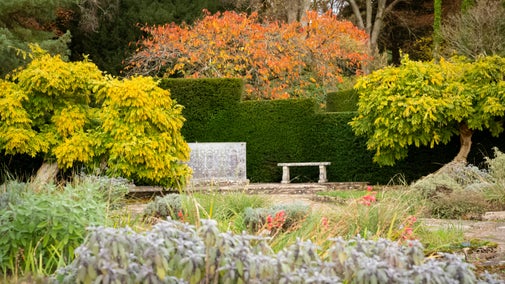
Discover more at Knightshayes
Find out when Knightshayes is open, how to get here, the things to see and do and more.
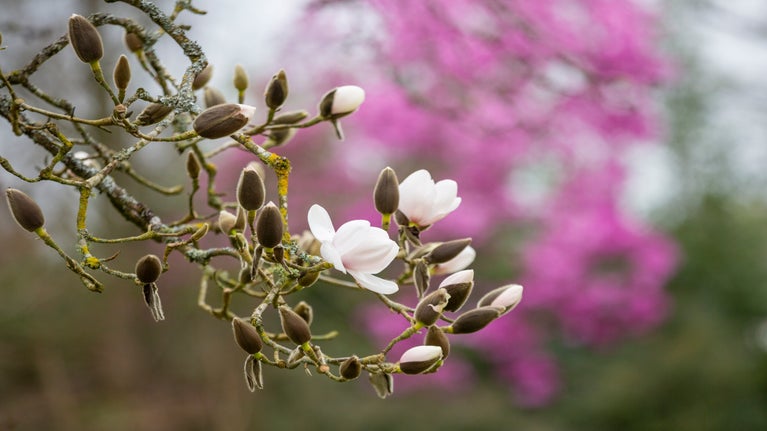
Lose yourself in the garden at Knightshayes, home to one of the most extensive plant collections in the care of the National Trust. Formal terraces, intimate garden rooms, and the remarkable Garden in the Wood transform beautifully throughout the year.
As winter fades, Knightshayes awakens with a vibrant display of spring colour. The terraces, once a 19th-century rose garden, now burst into life with crocuses carpeting the lawns and daffodils lining the paths. Hyacinths add their sweet scent to the air, while snowdrops linger just long enough to be joined by the first bluebells beneath the trees.
In the Paved Garden, pause on a bench and take in Joyce, Lady Amory's cherished palette of soft purples and greys, complemented by herbs and colourful bulbs.
Spring is also the prime time to explore the Garden in the Wood, one of only two botanical gardens in the world set within a woodland. Created by Joyce, Lady Amory, its dappled trails and sunlit glades are at their most enchanting now. The Cedar House offers a peaceful spot to rest and reflect.
Elsewhere, the South Garden comes alive with Japanese cherry blossoms and the first flush of wildflowers across the lawn. In Michael’s Wood, rhododendrons begin a spectacular show, with rare varieties like Rhododendron falconeri and Grevillea rosmarinifolia Jenkins to spot.
Sir John’s Wood is carpeted with snowdrops and bluebells, while fiery Pieris japonica and Pieris formosa add bursts of colour. Along the wide grassy paths of Hollys Lawn, the magnolia blooms early, followed by vivid purple rhododendrons that edge the area with drama.
The Arboretum begins its seasonal display with a bulb meadow that flowers from March to June, and the Camellia Walk offers a dazzling array of colours and varieties that continue into early summer.
In the Kitchen Garden, rhubarb pushes through the soil, and heritage crops begin to grow. It’s a working kitchen garden of 2.5 acres, so some areas may not always be filled with produce.
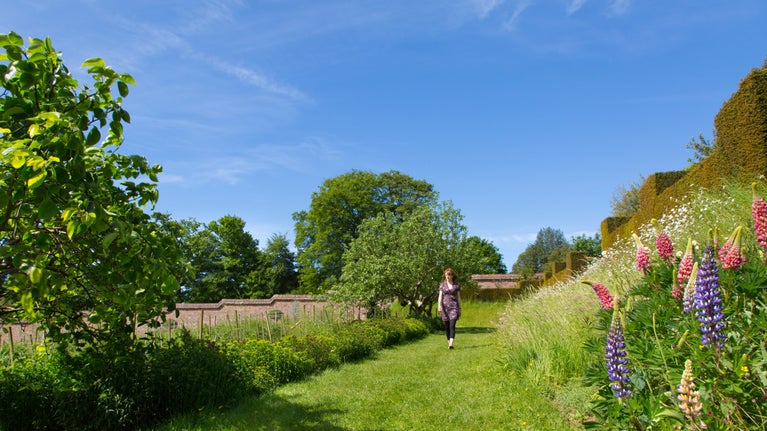
By summer, Knightshayes is in full bloom. The Paved Garden is a haven of herbs and vibrant bulbs. The South Garden offers sweeping views framed by wildflowers and exotic trees, with Japanese cherries now in full leaf.
Michael’s Wood continues its rhododendron display into early summer, while the Arboretum stands tall and majestic. The Douglas fir walk is particularly fine in summer, though it can be muddy after rain.
The Kitchen Garden is at its most abundant, with heritage vegetables thriving in the warmth. Visitors can see the fairy-tale turrets rising above rows of produce, harvested and used on site.

As the days shorten, Knightshayes shifts into a rich autumnal palette. The Garden in the Wood glows with golden foliage, its woodland setting perfect for quiet walks and reflection.
Pause to breathe in the 'burnt sugar' fragrance of the katsura tree outside the walls of the Kitchen Garden.
In Michael’s Wood, hydrangeas take centre stage, their blooms deepening in colour. Hollys Lawn offers a different kind of beauty, with brightly coloured stems adding structure and interest.
The Camellia Walk begins its second season, with autumn varieties blooming in shades that contrast beautifully with the changing leaves. In the Kitchen Garden, pumpkins ripen in time for Halloween, and late crops fill the beds with texture and colour.
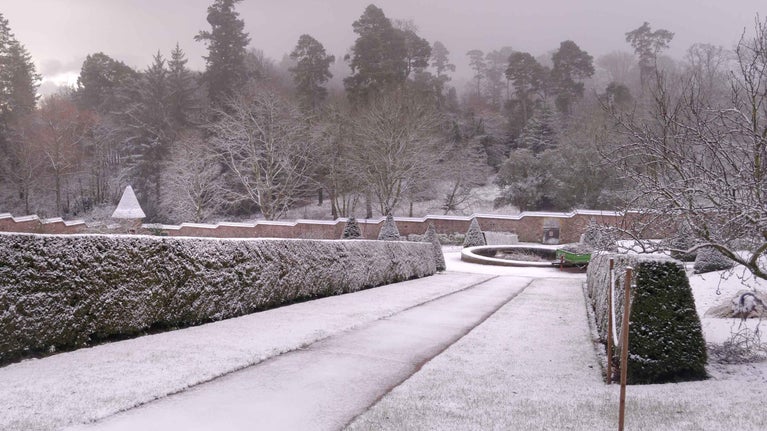
Even in winter, Knightshayes garden remains a place of quiet beauty. In Sir John’s Wood, snowdrops bloom early, joined by the ever-striking Pieris japonica. Hollys Lawn reveals its winter character through colourful stems and views over the pool garden and Tiverton beyond.
Camellias continue to flower along the walk, offering unexpected colour in the colder months. The Kitchen Garden, though less full, remains a working space with seasonal interest and a sense of purpose.

Find out when Knightshayes is open, how to get here, the things to see and do and more.
The walled kitchen garden, home to a vast collection of crops, is a gardener’s delight. Find out about the work the team does to care for it, and the other areas of the garden.

Discover the ground floor of house at National Trust’s Knightshayes. See the details behind architect William Burges's gothic façade and a portrait that may be by Rembrandt. From Saturday 14 February the first floor of the house will also reopen for a peek into the private spaces of the Heathcoat-Amory family.

Explore the parkland and garden at Knightshayes with your dog. Follow our dog walking guidance and find your next adventure here. Knightshayes is a two pawprint rated place.

Grab a bite to eat and drink in the Stables Café, or browse the range of goods in our shop. You'll find all the details here.

Delve into over 200 years of history at Knightshayes. Discover the Heathcoat-Amory family history, how the house and garden was designed and developed, and Knightshayes’s sad connections with the Second World War.

From 18th-century water gardens and Arts and Crafts landscapes to intimate woodland gardens, there are so many places to discover.

Discover our gardeners’ top tips so you can make the most of your garden, plot or window box.
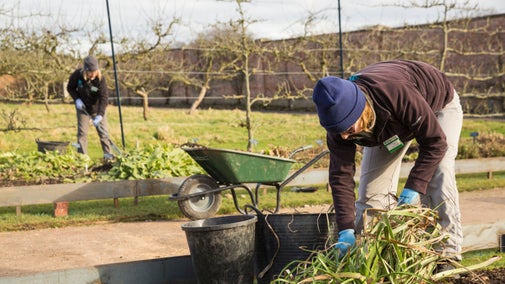
Take a stroll and explore the wide variety of the gardens we look after in Devon.
